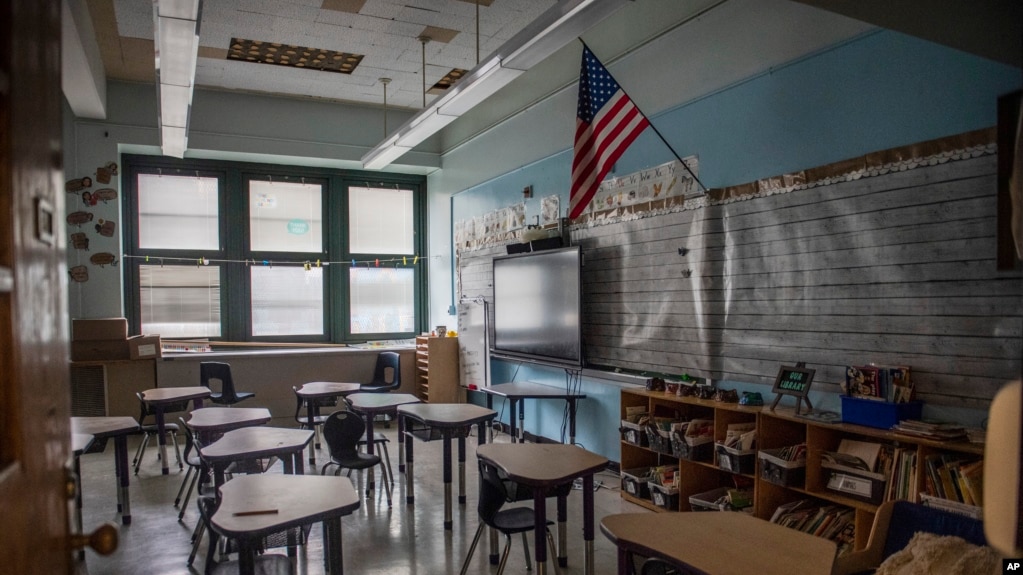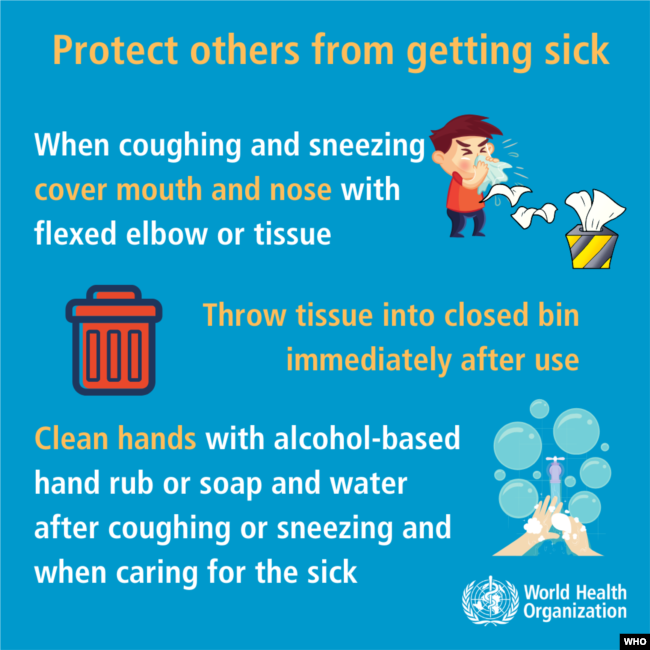AUDIO
US Schools Change Health Guidelines for Keeping Students Home

Unclear guidelines for when to keep a child at home if they are sick might play a part in the nationwide problem of students missing too much school.
Some activists, school officials and the state of California are now asking that parents send their children to school even if they show signs of sickness. They say acceptable problems include eye infections and lice.
Families need to hear they no longer must keep children at home at any sign of sickness, said Hedy Chang. Chang is the director of Attendance Works, a nonprofit group aiming to improve school attendance. The group has issued its own guidance. It urges parents to send children to school if they can join day-to-day activities, have low-level sickness or head lice.
The American Academy of Pediatrics is an organization for doctors who treat children. It recommends that children stay home when there are signs of sickness like fever, vomiting, or diarrhea, or when students “are not well enough to participate in class.”
A fever is defined as a body temperature above 38 degrees Celsius.
But many school districts go far beyond that, offering different signs of sickness that would prevent parents from sending their children to school.

FILE - This Aug. 15, 2016, photo shows the front of the Bellefonte Area School District certified school nurses office in Pennsylvania. (Abby Drey/Centre Daily Times via AP, file)
Which is it?
Trenace Dorsey-Hollins has a five-year-old daughter who was sick a lot last year. Dorsey-Hollins followed school guidelines and kept her daughter home when she had a cough, painful throat, fever, or sneezing.
Near the end of the year, school officials in Fort Worth, Texas, called her in to talk about why her daughter had missed so much school.
During the pandemic, schools urged parents and children to stay home at any sign of illness. Although the emergency has ended, she said no one has said that those rules have changed.
“In the past, if the child didn’t have a fever…then it’s okay to send them to school,” said the mother of five- and 13-year-old children. “But now it’s like if they have a cough…you might want to keep them home. Which is it?”
Dorsey-Hollins’ youngest daughter goes to school in Fort Worth Independent School District. It suggests staying home if a child has a cough, sore throat, or rash. The guidelines say a student should be “fever-free” for 24 hours without medication before returning to school.
Austin Independent School District in Texas lists signs of illness like “eye redness,” “undetermined rash,” or “open, draining lesions” as reasons to stay home.
Other school districts have different guidelines. Children with lice cannot go to class in New York City schools. And Maryland’s Montgomery County schools recommend keeping a child home for stomach pain, “pale or flushed face,” or “thick yellow discharge from the nose.”
Dr. Claire McCarthy is a doctor at Boston Children’s Hospital who teaches at Harvard Medical School. She said it is understandable that different places would have different guidelines.
“Each school or school district has a different tolerance for illness,” said McCarthy.

Stay at least one meter away from anyone who is coughing or sneezing. When someone coughs or sneezes, they release small drops of liquid from their nose or mouth which may contain the virus.
10 percent of the school year
Test results show that children fell behind in their studies when schools closed during the pandemic. Children who regularly missed school found it more difficult to catch up. During the 2021 to 2022 school year, more than 25 percent of students missed at least 10 percent of the school year. That number is up from 15 percent before the pandemic.
Missing 10 percent or more of the school year puts students at risk. Students who miss school also might miss meals, socializing with other students and adults, physical exercise, and mental health and health care services.
In addition, teachers must spend a lot of time supporting students who miss class. This takes time from students who attend class and are on target for the year.
Recently, the state of California decided to change their stay-at-home guidelines for the autumn. The new guidelines say children with low-level signs of sickness can come to school.
Noha Aboelata leads the Roots Health Center in Oakland, California. The group says it provides health services for poor people and those affected by inequality. Aboelata said the change in guidance might have a greater effect on poor people and minorities.
Aboelata said people in those communities might be more likely to live in homes with more than one generation, to take public transportation, or have poor heating and cooling systems in their homes.
She said she hoped that staying home when sick would continue after the pandemic. Instead, she said, “it feels like the pendulum is swinging fiercely back in the other direction.”
Tracy Schmidt oversees attendance for the Office of Education in San Diego County, California. She said she feels hopeful that parents and schools will learn about the new guidance and that students will miss less school.
“The most important place for our kids to be is school,” she said.
Words in This Story
lice –n. (pl.) a small creature that lives on people’s bodies and easily spreads from person to person
participate – v. to be involved with others in doing something
school district – n. an area created by a local government which has public schools that are overseen by local government officials and paid for through local taxes
cough –v. the involuntary forcing of air through the throat often because of sickness
sore –adj. painful
rash –n. a condition on the skin that makes it red or swollen and often produces itching
undetermined –adj. unknown
lesion –n. a raised area of skin that is unhealthy, damaged or cut
tolerance – n. the ability to accept, experience, or survive something harmful or unpleasant
https://learningenglish.voanews.com/a/us-schools-change-health-guidelines-for-keeping-students-home/7478455.html